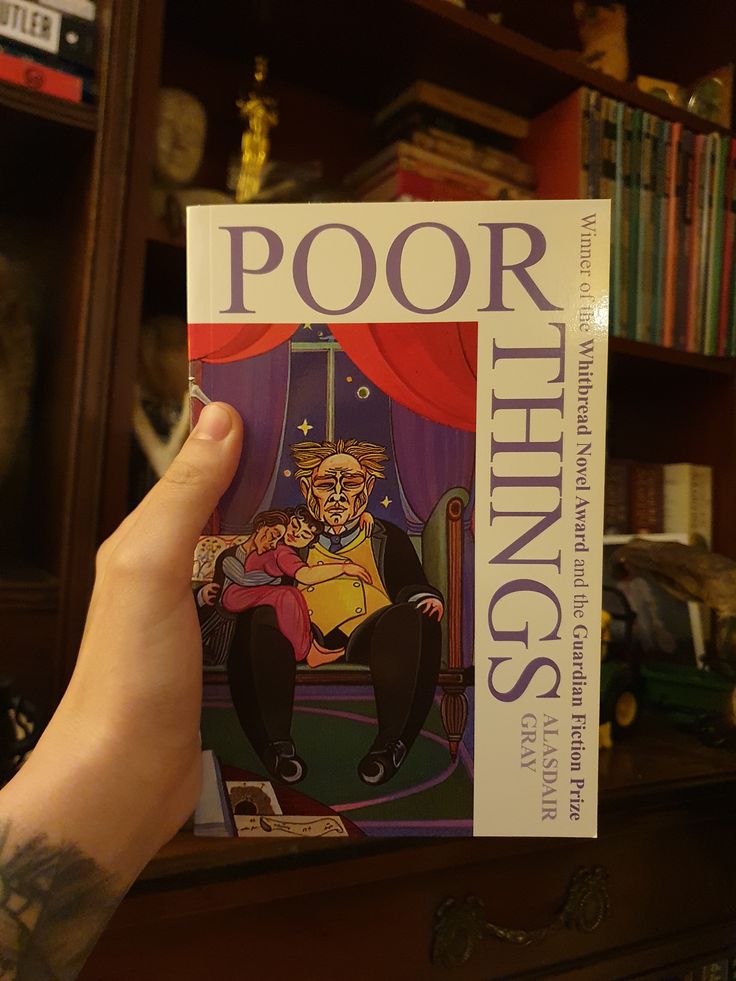What happens when literature dares to play God? When a story about a reanimated woman becomes a metaphor for autonomy, identity, and liberation? Poor Things by Alasdair Gray does just that—and more.
This strange, whimsical, and haunting novel has taken on renewed life thanks to its recent film adaptation, but at its heart, Poor Things is a deeply literary and experimental book that invites you to rethink everything—from who tells the story, to how it’s even told. If you’ve found yourself wondering “What is Poor Things about?” or you’ve been Googling “Poor Things plot” or even “Pobres criaturas en inglés,” then you’re in the right place.
Let’s break it all down—chapter by chapter, theme by theme, and rumor by delightful literary rumor.
A Gothic Frankenstein for Feminist Times: What Is Poor Things About?
The basic Poor Things synopsis goes something like this: Set in Victorian Scotland, the book follows Bella Baxter, a woman brought back to life by the eccentric and morally dubious Dr. Godwin Baxter. Bella’s brain, we are told, comes from a child—and yet she matures rapidly, socially and sexually, creating chaos in the world of men who think they control her.
But Poor Things isn’t just a gothic sci-fi novel. It’s also a metafictional puzzle box, written as if it were a rediscovered manuscript with commentary layered on top. The central narrative is presented as a memoir by Archibald McCandless, a man in love with Bella, only to be contradicted by Bella’s own voice in the appended notes.
So, what is Poor Things about really?
It’s about power. About how stories are told and who gets to tell them. It’s about gender and rebirth, colonialism and class, science and storytelling. And if you read between the lines, it’s also a critique of Victorian prudery dressed up in the most deliciously subversive way.
Alasdair Gray: The Visionary Behind Poor Things
Before diving further into the themes and impact of the Poor Things book, let’s talk about its creator.
Alasdair Gray, one of Scotland’s most celebrated literary figures, was never content to write “normal” novels. Known for blending art and prose, fantasy and politics, Gray’s writing often bends the rules of fiction. In Poor Things, he doesn’t just tell a story—he performs surgery on it.
Gray’s own illustrations pepper the pages. His voice is embedded in the footnotes, introductions, and contradictory “editor’s comments.” It’s no surprise that Poor Things is often labeled a postmodern masterpiece.
The Poor Things novel is a quintessential Gray creation: imaginative, grotesque, beautiful, and unafraid to confront uncomfortable truths.
Unraveling the Poor Things Plot: A Tale of Many Layers
Let’s unpack the plot a bit more. If you’re looking for spoilers, here’s your gentle warning.
After being found drowned, Bella is revived by Dr. Godwin Baxter—aka “God.” But instead of being a passive Frankenstein’s monster, Bella becomes a fiercely independent woman, eager to explore the world on her own terms. She eventually runs away with Duncan Wedderburn, a seductive but selfish lawyer, and embarks on a whirlwind journey through Europe and beyond.
Here’s where it gets really fun. Every man Bella meets tries to define her, to pin her down. And every time, she slips away, forming her own opinions, asserting her will, rewriting her identity. If you’re reading Poor Things for the first time, it’s like watching someone light a match under Victorian values—and laugh as it burns.
This is where the “poor little things” title begins to feel ironic. Bella isn’t a victim. She isn’t “poor” in any traditional sense. She is, if anything, the author of her own revolution.
Movie Adaptation vs Book: What Is the Movie Poor Things About?
With the recent adaptation by Yorgos Lanthimos, starring Emma Stone as Bella, a whole new generation is discovering this tale. But many are left wondering: What is the movie Poor Things about, and how does it differ from the Poor Things book?
The film sticks to the core premise—Bella’s rebirth, her sexual and social awakening, and the satire of Victorian morality—but it streamlines much of the novel’s metafictional structure. It’s bold, visually extravagant, and heavily stylized, but the book offers far more nuance in terms of theme and structure.
If the movie is a surreal painting, the novel is an entire gallery of mirrors and illusions. They complement each other, but for those who love layers of literary complexity, the Poor Things ebook or physical copy is essential.
A Reader’s Guide: Who Should Read Poor Things?
If you’re someone who:
- Loved Frankenstein but wanted it to have more wit and rebellion
- Enjoys feminist retellings and stories about bodily autonomy
- Gets excited by metafiction (think The French Lieutenant’s Woman)
- Wants to be both confused and delighted by what’s “true” in a book
…then Poor Things is your next must-read.
However, a fair word of caution—if you’re looking for a straightforward story, Poor Things may feel challenging at times. That’s where a Poor Things parents guide may come in handy if younger readers are curious. The book includes sexual themes, dark humor, and political undertones that are more suited for mature readers.
Themes That Still Hit Hard Today
Even though Poor Things was published in 1992, it’s incredibly timely in today’s world. The novel interrogates:
- Reproductive rights and bodily autonomy
- Sexual liberation and shame
- Gender norms and patriarchy
- Power structures and storytelling
- Post-colonial critiques and race
Bella’s refusal to be categorized echoes today’s conversations around identity, feminism, and who controls the narrative. When you revisit the Poor Things wiki or summaries online, you’ll notice just how many readers are rediscovering its political brilliance now.
Poor Things Reviews: What Are Readers Saying?
So what do the Poor Things reviews actually say?
Here’s a quick roundup:
- “A mad genius of a book. Like Mary Shelley, but with added chaos.”
- “Unsettling, hilarious, and oddly uplifting.”
- “Gray’s voice is so distinctive, you almost feel like he’s in the room with you, reading aloud.”
Others point out that the novel’s unconventional structure can be off-putting at first. But for those who push through, it’s a rewarding experience unlike any other.
Even the Poor Things rating on Goodreads reflects this polarizing brilliance—there’s no in-between. Readers either find it utterly strange and unforgettable… or just too strange to continue.
Where to Read It: Poor Things Ebook and Physical Copies
Want to dive in yourself?
You can grab the Poor Things ebook on most major platforms, including Amazon Kindle and Apple Books. If you’re more of a hardcover fan, you’ll appreciate the book’s vintage design and Gray’s self-drawn illustrations.
Either way, this is one of those novels where you’ll want to reread sections—if not the whole thing—just to pick up on everything you missed the first time around.
Final Thoughts: Why Poor Things Still Matters
At first glance, Poor Things might just seem like another quirky Victorian tale. But dig deeper, and you’ll find one of the boldest feminist novels of the late 20th century.
Alasdair Gray didn’t just write a story—he constructed a literary experiment, one that exposes the dangers of playing God while celebrating the audacity of rewriting your own story.
Whether you’re here because the movie piqued your curiosity or you stumbled across the Poor Things plot on a late-night book search, this book will leave an imprint. A strange, bold, beautiful imprint.
And hey, you heard it here on Riya’s Blogs first—this is one of those stories that you’ll keep thinking about long after the last page.

Want to read a bit more? Find some more of my writings here-
Book Review: The Fine Print by Lauren Asher
Books That Will Ruin You Emotionally (In the Best Way)
The Truth in the Lies: A Short Story
I hope you liked the content.
To share your views, you can simply send me an email.
Thank you for being keen readers to a small-time writer.







